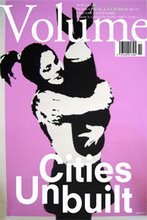Erasing Palestine from Lifta
Sophie O’Brien reports on the judaization of Lifta, the last remaining Palestinian village inside the Green Line - Palestine Monitor,19 March 2011
The Israel Land Administration (ILA) has put a plan in place which would see land in the village of Lifta, a former Palestinian village situated on the north-west edge of Jerusalem sold to private developers. A plan which would see Palestinian history completely stripped from the village.
The ILA plan calls for amongst other things, the building of 212 housing units exclusively for Jews, a luxury hotel, a shopping mall and a museum. In objection to these building plans, a large petition has been signed by various activists, NGO’s and descendents of Lifta and submitted by Attorney Sami Arshid. As a result of this petition a temporary injunction was issued by Judge Yigal Marzel on the 7th of March ordering the ILA to freeze publication of results for tender which would see plots of land sold off to these private developers.
Over 500 Arab villages were depopulated or demolished during the 1948 war by the ruthless colonial Zionist forces. Lifta is an exception in this respect as it is ‘The only village which remains as it was before 1948,’ Daphna Golan asserts, a Professor of Law at the Hebrew University and organiser of the petition to save Lifta. Whilst on the surface the plan is sold as a rejuvenation project bringing life to an otherwise ‘abandoned’ village, Golan is adamant that it is primarily a political venture. ‘It is a building plan geared towards erasing the past,’ she asserts. In other words, serving to continue the process of judaization of the land, a policy which aims to eradicate Palestinian history, memory and presence.
Most of the original buildings and houses still remain somewhat intact in Lifta, a village which dates back to biblical times. For Yacoub Odeh, a former Lifta resident, a human rights activist and a central figure in the Save Lifta campaign, this is bitter sweet. He speaks of his memories of living in Lifta with great fondness. It is tainted however with the reality that he no longer has any right to live in the village from which he was forcefully removed by the pre-state Zionist terrorist gangs working under the auspices of the Zionist movement. ‘I remember the bakery where I went with my mother to eat bread with olive oil and zatar, it was delicious…I will never forgive those who stole our history and our memory,’ he says.
Lifta was one of the first villages occupied before the 1948 war and the creation of the Israeli state. Its proximity to Jerusalem meant that it was of great strategic importance to the Zionist movement; Yacoub explain, ‘Whoever controlled Lifta controlled Jerusalem.’ In refutation of Zionist claims that depict the pre-state Zionist movement as a heroic, pioneering enterprise, Yacoub describes how the Muslim and Christian inhabitants of Lifta were evicted from their homes through the use of brutal, racist tactics. ‘They bombed the homes of twenty people…but the Jews were allowed to stay.’ The terrorising of the Muslim and Christian inhabitants of the village ‘achieved the Zionist goal of ethnic cleansing,’ Yacoub continued. After 1967, Jewish immigrants were moved into the houses of those who had been forcefully removed. It is the descendents of these families who remain the sole inhabitants of Lifta today.
The ILA plan to redevelop the village of Lifta is symbolic for the reason that it nullifies the possibility of the Palestinian refugees who once lived there of ever returning to their homes. For Yacoub, this is the greatest injustice. The Israeli Law of return grants Jews from around the world the possibility to ‘return’ to their ‘homeland’ and gain citizenship. The original inhabitants of Lifta are, however, not awarded with this option, ‘I was evicted from my house 63 years ago and I don’t have the right to return,’ Yacoub said.
Successive Israeli governments have to date managed to maintain an unstable status quo whereby all the so-called ‘final status’ issues have been left up in the air. Yacoub asserts that the right of return is prerequisite for peace, ‘Without the right of return, there will be more killing and more blood.’
Further evidence that the ILA plans are aimed at seizing the identity and completing the Judaization process of the last remaining Palestinian village can be seen in the details. There are plans to build a museum which Yacoub asserts will showcase a purely Jewish recollection of the history of Lifta, ‘Surely it will not mention the Palestinian people; they see with one eye only.’
Furthermore, the cemetery where many former Palestinian residents of Lifta have been buried has been designated as public land in the plan, thus creating the possibility that it may in the future be removed for the purposes of further building.
The village of Lifta is significant for the reason that it reminds us of a time when Muslims, Christians and Jews lived harmoniously on the land. In this sense, Golan asserts that ‘It should be used as a place where Jews and Arabs can meet to acknowledge their shared history.’ If the ILA plans are approved, it will therefore be removing a powerful symbol of reconciliation. More ominously, the ILA plans which are portrayed as being devoid of any political significance are in fact a painful reminder that the colonial Zionist enterprise is still thriving.
Wednesday, March 23, 2011
Subscribe to:
Comments (Atom)
